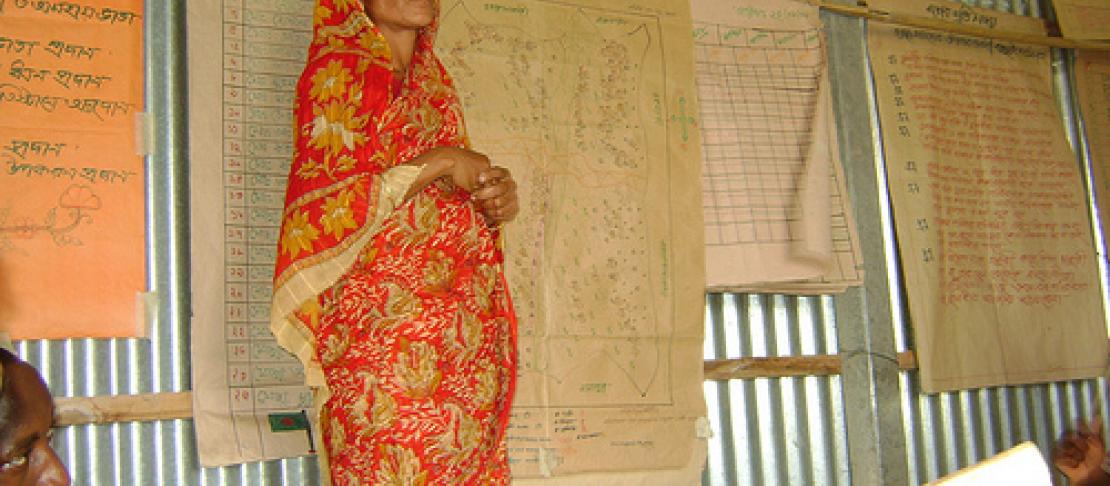Community-based adaptation: The missing link

Maurine Ambani of the CARE-Adaptation Learning Programme, Kenya, reports from the 5th Annual Community Based Adaptation to Climate Change Conference, in Dhaka, Bangladesh.
The first three days of the 5th Community Based Adaptation (CBA) Conference in Bangladesh allowed participants to visit different communities where CBA is being implemented. Community action research groups were an interesting concept that was observed in the Sirajganj district in Bangladesh. The groups are involved in developing detailed analyses of climate impacts on their daily lives.
Through their own observations, members of the community group in Baagbhaura village have noted changing rainfall patterns in their area. Over the last 10 years, they say that the number of seasons has reduced from 6 to 3; floods have become more frequent, intense and they extend over a longer duration. Rajna, the leader of the women’s group, then went on to explain how they developed a social map to spatially locate the areas that were at risk, the most vulnerable people in those areas and the available resources. This map made it easier for the community to identify the problems they faced, probably due to the visual element.
The group then produced a seasonal calendar where they put down the timings for when it would be best to undertake different activities, based on past climatic conditions. Additional to this, they conducted a capacity analysis that specified what was needed for their activities to be successful, the resources that they had and what could be done by the different members of the community. These analyses resulted in proposed solutions that not only factored in climate but also the ability of the community to undertake the proposed activities. The activities were detailed in a work plan and included risks to the plan and what to do to minimize the risk.
Such analyses demonstrated CBA as a community driven process that used local knowledge, which is in order because communities know their local conditions better. However, climatic conditions have changed, even as the community noted, and so knowledge that they relied on in the past may no longer be completely reliable. Should we then, in the spirit of community-driven process, leave it all up to communities to come up with their own solutions?
Quoting a question posed by one of the participants at the conference, “Are we addressing the right problem?” My overall sense from the field trip was that the community is good at analyzing the past climate events in an effort to understand the impacts of those events, especially what has changed. What was widely missing was the forward looking and thinking “outside the box” on how to prepare for and respond to future climate change risks. We need to recognize that what people did in the past may no longer work in the future, and therefore enable communities to move to towards proactive strategies rather than purely reactive ones. This implies fostering an environment where new knowledge can continually be acquired; from climate projections to new technologies and livelihood options that are based on possible climate scenarios.